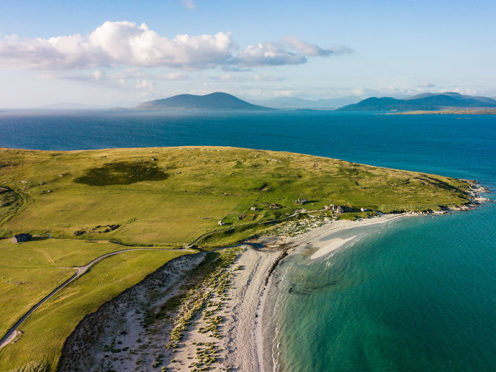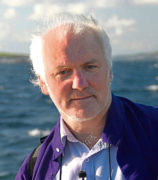I sometimes wonder who sold the first house. I mean, did Angus and his wife Morag who lived in a cave – let’s say some 8,000 years ago – sit by their fire of an evening discussing the burgeoning cave market?
Donald and Murdina’s hollow next door, for example, was much better: had a front space as well as a back, and maybe if Angus worked that bit harder when out hunting, he too could aspire to that double apartment?
I suppose I’m conditioned by the fact I grew up in a time and place where no one sold their houses. They were homes rather than part of a property portfolio. The Crofting Act of 1886 had enshrined security of tenure into law, so that even if you lived in a turf-roofed hovel, at least you couldn’t be evicted.
It wasn’t heaven though, not everyone had a croft, and given the right of primogeniture, where the croft was usually handed on to the eldest (son), that left the younger siblings landless and homeless. They headed to Glasgow and Canada.
But still my memory of growing up in South Uist is that crofts, and the buildings that were on them, were kept in the family in perpetuity, even though you could clearly see the generational changes: the ruins of an original stone black house here, the remains of the thatched white house there, then the brand-new Department of Agriculture bungalow, where the family now lived, on a small hillock beside it.
If you didn’t have the privilege of a croft – which we didn’t – your best bet was to somehow acquire a small portion of land on which to build a home. That’s what my father did after the Second World War, building a hut, re-assembled from the military barracks from Benbecula, in which I was born and brought up. A neighbour, Archie MacKay and his family, lived in a thatched house on a small portion of common land across from us, while a bachelor, Ewan Steele – who returned to the island after spending 40 years working on the boats on the Great Lakes in Canada – lived in another small stone cottage.
I’m not sure how inevitable it was that the market economy would drive a horse and cart through that collective, if flawed, reality. The change began in 1976 when tenant crofters were given the right to buy – and by extension sell. Isn’t it fascinating that four years prior to Margaret Thatcher’s famous “Right to Buy” of council housing in the Housing Act of 1980, the free market was already unleashed under a Labour government in our own fields?
Suddenly, land that was held in a kind of sacred trust, handed down from one generation to the next, could be bought and sold. The chain of memory and associations – where grandfather had ploughed the field with the horse, and where granny had carried the water from the well – was broken, as new, often non-indigenous, owners bought the echoing land. They have every legal right to do so, along with the privilege of creating vital new memories.
But the old song soon becomes lost. It’s well recognised in colonial and post-colonial studies that one of the first things a conquerer does is to separate you from the ancestral land in which so much of your identity is rooted. Every hill and stream and place had a name and a history. You don’t even have to be cleared from it: just alienated from it, regarding it merely as a piece of real estate which can be profitably sold at any time.
Land, of course, is more than real estate, it sustains us in every way. Good land, looked after and manured and sown and harvested keeps us all alive. We live off it as well as on it, and we sever that connection at our peril. Even though God stopped making it aeons ago, there is still plenty of it, if only it were equally distributed. And I’m not just talking about large Highland estates, but about so many disused corners of Scotland all going to waste for the want of opportunity and labour.
Give our young people a bit of land on which to build a house and grow their own crops and keep their livestock.
I know we live in a global free-for-all market, but unless we take urgent steps to control that rampant market and re-connect with the earth, we’re all done for. The global climate crisis itself demands it. Otherwise, I might need that cave after all.
Angus Peter Campbell is an award-winning writer and actor from Uist











